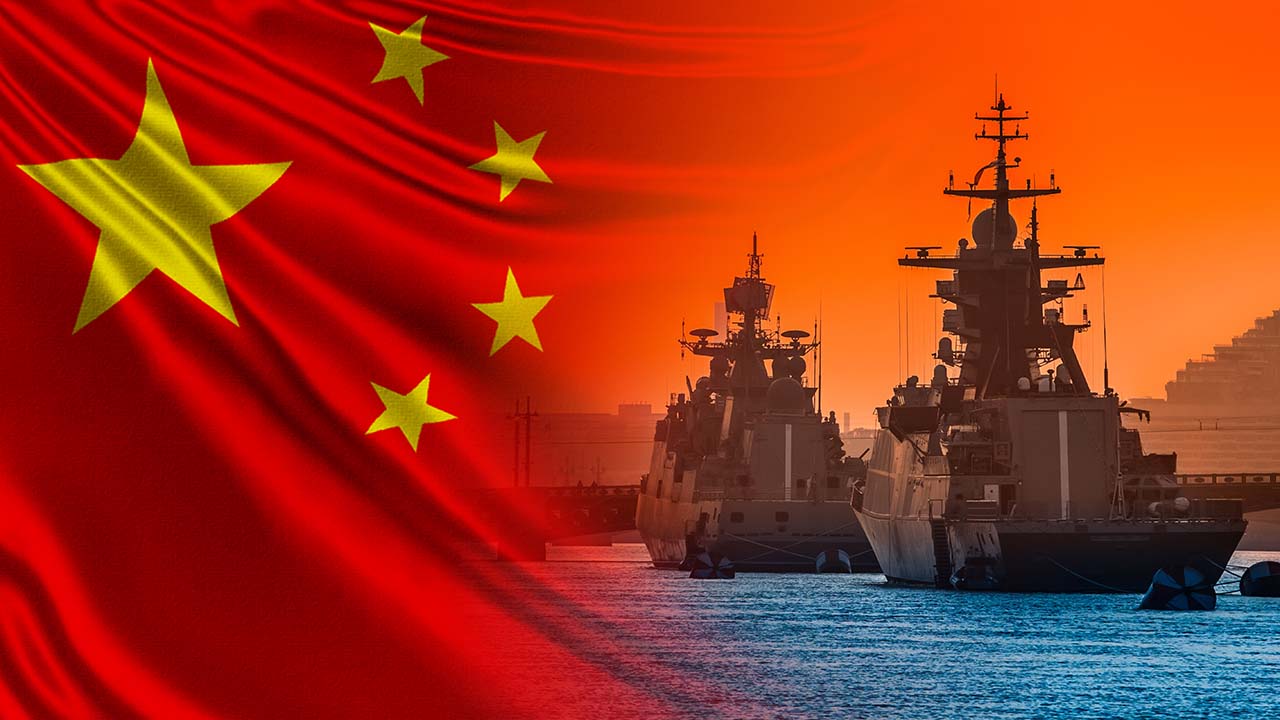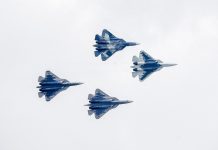Amid intensifying rivalry with the United States and persisting tensions in the Taiwan Strait, China has decided to hike its 2025 defense budget by a whopping 7.2% to US$246 billion.
According to reports in the state media, China’s planned defense expenditure this year is estimated to be about 1.784665 trillion yuan (US$246 billion). The proposed defense budget was reportedly included in the draft budget report presented at the opening of the 14th National People’s Congress (NPC), the country’s legislature.
Notably, the increase of 7.2% is the same as in 2023 and 2024. Some Western observers pointed out that for ten years, China’s defense expenditures have grown only by single digits, which might indicate an economic slowdown.
However, Chinese experts cited by state-owned Global Times argued that the budget increase was in line with China’s strong economic growth. Fu Qianshao, a Chinese military expert, said the nation’s defense budget has increased steadily and moderately in tandem with China’s consistent economic growth and GDP expansion over the past decade.
The budget hike comes amid intensifying rivalry between China and the United States in the Asia-Pacific region and worldwide. The two countries have been preparing for a potential battle by adding state-of-the-art weapons, relentlessly working on novel technology, and expanding their military presence worldwide.
According to reports, Chinese defense spending is also aimed at bolstering readiness in the face of a future Taiwan Strait crisis. China refuses to recognize Taiwan’s sovereignty and maintains that the island, with its 24 million inhabitants, is a renegade Chinese province that will eventually be reunited with the Chinese mainland, with force if necessary.
While presenting the budget on March 5, Chinese Premier Li Qiang reaffirmed his “strong opposition” to those who advocate for Taiwan’s legal independence and their international backers– an oblique reference to the United States and its allies. “We will firmly advance the cause of China’s reunification and work with our fellow Chinese in Taiwan to realize the glorious cause of the rejuvenation of the Chinese nation,” Li said.
The budget presentation development comes days after China’s Taiwan relations chief, Wang Huning, called on his country to “shape the inevitable reunification of the motherland” during a meeting on Taiwan in Beijing on February 26. Additionally, the People’s Liberation Army (PLA) forces also launched unprecedented “live fire” drills off the southwest coast of Taiwan without prior announcement.
China May Be Spending Even More On Defense
China’s increase in defense spending comes as it invests in cutting-edge weaponry, training, and research and development aimed at further enhancing its combat capability and establishing regional and global dominance.
Chinese state media explained the growth in the defense budget and stated that the country has made significant progress in modernizing its national defense.
For instance, it has developed and debuted a second fifth-generation stealth fighter named J-35A, started sea trials on the third aircraft carrier, ‘Fujian,’ and launched the world’s first amphibious attack ship equipped with electromagnetic catapults, ‘Sichuan.’
Chinese military expert Fu Qianshao said with the Type 076 amphibious assault ship Sichuan expected to begin trials, the aircraft carrier Fujian expected to enter service, and the J-35A expected to go into mass production in 2025, China must invest in the development of new weapons to fill the gaps and improve national security.

Notably, China is also developing and testing sixth-generation fighter jets and working on its next-generation stealth bomber, the H-20. And, if reports are to be believed, work has already started on the country’s fourth aircraft carrier.
Song Zhongping, a Chinese military expert, told Global Times that the PLA regularly holds training exercises to maintain and improve combat preparedness, which also requires financing. Song asserted that more funding is required for recruiting and training troops.
The Chinese experts further highlighted another factor driving China’s growing defense spending: the country’s complicated security environment, with special reference to the contentious South China Sea, where China remains embroiled in territorial disputes with other claimants. Additionally, China has been militarizing the artificial islands it has constructed in the region, which also requires a constant flow of money.
Fu stated that the PLA must increase battle readiness to prevent future crises in the South China Sea and the Taiwan Straits and guarantee prompt action in the event of one. He emphasized that China must increase its investments in ensuring national security while acting as a regional and international bulwark for peace and stability.
Having said that, Chinese defense spending is also aimed at achieving President Xi Jinping’s goal of complete military modernization by 2035, which entails developing new ships, missiles, submarines, and surveillance systems, among other things. The country is also widely known to be pushing ahead in defense-related artificial intelligence (AI), Quantum technologies, hypersonic platforms, and autonomous systems.
However, China’s critics and global military analysts believe that China’s actual defense spending may be much more than the numbers on paper.

Writing for EurAsian Times earlier, Air Marshal Anil Chopra, an Indian Air Force veteran and a popular military commentator said, “China is well known for having significant defense spending outside the officially announced defense budget. This is an obvious reality because of the pace at which they are launching defense satellites, maintaining the world’s largest military, building the world’s largest navy, including aircraft carriers, adding nearly 60 stealth J-20 to PLA Air Force (PLAAF) inventory every year; will soon be having a stealth bomber; a fast-growing large transport aircraft program; and infrastructure building in the South China Sea (SCS), and the Himalayas.”
Air Marshal Chopra said that China was likely concealing information from the public and the rest of the world, and successfully hiding several underlying defense costs to keep the overall spending numbers in check. Thus, its defense spending appears to be lower than that of its rival the US, the world’s largest defense spender.
“These days, many dual-use technologies can easily be covered under civil code heads. China also runs many programs under civil-military fusion and has huge paramilitary and militia-related spending. The same is true for defense Research and Development (R&D) spending.”
Chopra also asserted that due to low-paid labor, defense production in China is far less expensive than in the US and other Western nations, which essentially means that Beijing benefits far more from the investment than its counterparts.
Moreover, it is pertinent to note that the Chinese military budget frequently excludes de facto military operations. Pentagon-affiliated think tanks contend that Beijing leaves out defense budget allocations for military R&D, paramilitary groups, and numerous active military missions. It does this by either not reporting the expenses or channeling them through civilian ministries.
Another significant hidden military expense is Military research and development (R&D). According to some experts, military-related organizations receive around half of China’s central government’s R&D expenditures, amounting to nearly US$50 billion. Additionally, defense spending does not include space-related spending, which is believed to be interlinked to the Chinese military.
The defense budget also purportedly excludes China’s state-sponsored cyber hackers, the militarization of commercial vessels, the People’s Armed Forces Maritime Militia, and technologies like AI and 5G, which have become instrumental for the military lately.
Though EurAsian Times cannot confirm these claims and assumptions, the Chinese defense spending is to be closely watched as the competition between Beijing and the West becomes more intense than ever.
However, China is not the only country in the region increasing defense spending. Countries like Japan, the Philippines, and now Taiwan have also decided to invest more money in their militaries.
Taiwan Promises A Defense Spending Hike
Given the high stakes in the region, Taiwan has also vowed to hike its defense spending. Taiwan’s defense minister, Wellington Koi said the island is preparing to increase military spending in response to the “escalating threats from adversaries and the rapidly changing international situation.”
Taiwan’s defense spending is aimed at modernizing its military so it could thwart a potential Chinese invasion and appease the Trump administration, which has exhorted its allies to hike defense spending.
In a recent development, Elbridge Colby, the nominee to become under secretary of defense for policy in the Trump administration, chastised Taiwan for spending too little on defense and warned that the self-ruled island state must significantly increase its defense budget to about 10% of GDP to prevent a conflict with China.
“They should be more like 10%, or at least something in that ballpark, really focused on their defense. So we need to properly incentivize them,” Colby said at his Senate confirmation hearing on March 4.
The US remains the largest arms supplier to Taiwan despite adhering to the ‘One China’ principle and not having any diplomatic relations with Taipei. Colby told the Senate Armed Services Committee that although Taiwan’s status was not “existential” to the US, Washington maintained significant national security interests in the island. “Losing Taiwan, Taiwan’s fall, would be a disaster for American interests,” Colby said.
- Contact the author at sakshi.tiwari9555(at)gmail.com
- Follow EurAsian Times on Google News




